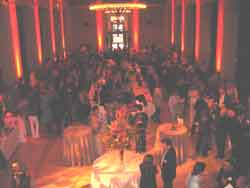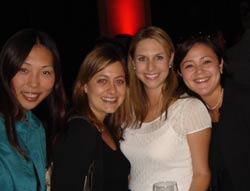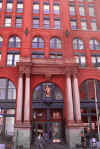Today’s PODCAST from
DOWNLOAD TELL A FRIEND PLAY
Distribution in America is the key to success. Like anywhere in the
world, ‘route to market’ is always going to be the killer attribute that can
mean the difference between success and failure. Nowhere in the world is
this more apparent than in the United States where the neo-prohibitionist
hangover of federal liquor controls hangs thick in the air. Americans, it
seems, have reached an uneasy state of acceptance of this extraordinary
status quo where every facet of a wines journey to the end consumer pads
somebody’s pocket. To recapr for those who are confised by these statements.
America (generally) has a 3 tiered system of wine distribution whereby the
non-American producer cannot legally sell wine to anyone but a wine
importer. The absurdity starts when you understand that no single person or
business entity may own both a distribution and import license. What this
means is that the importer cannot sell wine to the consumer or even the
retailer/restaurateur and can only sell wine toa distributor who in turn can
also only sell wine to the trade. Technically speaking, the only place a
consumer can gain access to imported wines is through the 3rd tier of the
channel which is the retailer or restaurateur. Once you understand the
vastness of the US market, it is understandable that perhaps this system
would have evolved independently as few companies have the infrastructure
and capabilities to own and distribute nationally with efficiency. But the
system really falls down in the sense that it suppresses free market
activities and that the larger National distributors have little in the way
of competition. As a result of this and to further entrench this skewed
power balance, the larger distributors are being consolidated at a rate
that is unprecedented and fewer distributors are controlling more of the
market. It feels sometimes that every medium-size distributor in the US is
simply waiting for the ‘big guys’ to come along and buy them out. Might I be
over-dramatising this? Maybe, but this is the feeling on the ground.
So what does this mean for South Africa? Well, for every distributor that
gets purchased, this means fewer distribution slots for South African wines
exist and fewer small producers are able to participate in what becomes a
much larger structure. The larger a distributor gets, the larger the
supplier has to become in order to become a meaningful contributor to bottom-
line. The big brands become bigger and the smaller brands get squeezed out.
The consolidation of distribution and ongoing production fragmentation
continues apace. The two trends are not compatible and we will have to win
over some serious buyers to grow South African wine in the US – usually at
the expense of another global supplier.
So where are the opportunities?
The federal and state regulators are slowly (very slowly) dismantling the
complex wine distribution laws, but a combineation of big business
(distributor) lobbying in Washington, a very religious and conservative
population and misplaced priorities is hampering this progress. A high-
profile battle between retail giant Costco and the state of Washington
recently threw up a couple of clues about the future when Costco won the
first step in the battle to allow it to ship directly from the producer. Of
course this judgement will go to appeal and will probably be held up for
years, but Costco is being aggressive and has set a valuable precedent which
any sensible judge cannot fail to respect.
Is this a good thing? Well, yes and no as it si being championed by the
mammoth retailers and you can be sure that they are not pursuing a
Samaritanian endeavour to make money for the supplier – no, they are chasing
margin for their bottom-line because they know that through direct imports
and direct shipments, that they can leverage their massive nation-wide
distribution network to exponentially multiply their sales and balloon
already embarrassing margins.
Opportunities exist for South African suppliers to find routes to market
that narrow the gap between importer, distributor and retailer. In some
states, it is (kind-of) legal for the husband to own an import license, the
wife to own a distribution license and the kids to own multiple retail
licenses. It happens – another symptom of an idiotic system. Many California
wineries drive a substantial volume of their sales through wine clubs and
direct shipments to customers. Of course there is a limited amount of states
that you can ship to directly, but this has been growing over the years. Is
there a business model here for South African wineries. Is there an
effective model for a South African winery to run a wine club for direct
sales to customers? The answer must be yes, but there has to be demand first
and brand South Africa must become more entrenched before this will work. So
the hard work lies ahead in this massive market opportunity that is the USA.





